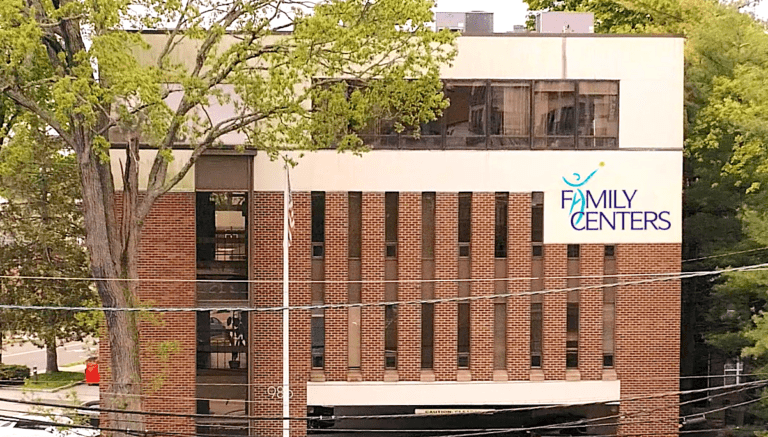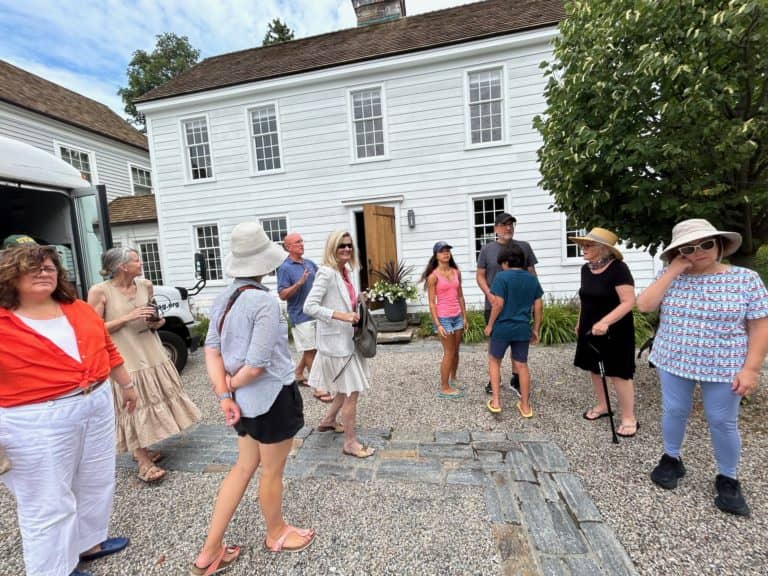By Michael LaGamma
At the February 8 meeting of the Retired Men’s Association, David Michonski introduced the speakers, Officers Keith Hirsch and Daniel Paladino, highly trained police officers of the Greenwich Police Department. Both are assigned to the Community Impact Section within the Detective Division of the Greenwich Police Department and are passionate about educating the public about this critical social and safety issue. Both have been educated in specialty classes all over the country, are certified in Threat Assessment, Crime Prevention, and Crime Analysis, and are certified as instructors for Civilian Response to an Active Shooter. Detective Hirsch has been named Office of the Month several times, was the recipient of the Doctor John A. Clarke award for Officer of the Year and was the recipient of the Community Policing Award for 2017 from the U. S. Attorney’s Office. Detective Paladino has served for 20 years and received accolades that include Officer of the Month and the Community Policing Award. Both officers are life-long Greenwich residents and graduates of Greenwich High School.
Officer Hirsch opened the presentation by emphasizing the importance of situational awareness. There are three components of situation awareness:
• Recognition: be alert.
• Assessment: is there danger?
• Response: what to do?
Officer Hirsch said that when in public we tend to be complacent and not pay attention to our surroundings. For example, are we aware of our surroundings when on our way to work, when buying coffee, when seated in a restaurant or movie theater? And what about when we are parking our cars, or checking our emails and texts?
He recited some interesting statistics regarding mass shootings. The definition of a mass shooting is one in which there are three or more victims, excluding the shooter. Although the perception is that we have a mass shooting every day, in fact, in the 40 years from 1982 there have been 140 mass shootings. Those shootings have injured over 1,500 people and killed over 1,000. Compare those figures with lightning strikes: in the last 30 years over 4000 people have been injured and over 700 killed in lightning strikes! The first mass shooting occurred in Pennsylvania on July 26, 1764 when 3 men killed 10 schoolchildren and the headmaster. From 1800 to August 1, 1966 there have been 153 mass shootings. That’s less than one a year.
Why is the date of August 1, 1966 memorable? On that date a shooter in an Austin, Texas bell tower killed 17 people and the incident was broadcast live on TV. The “big picture” is that this incident showed how shooters could get their 15 minutes of fame, and since August 1, 1966, there have been 300 mass shootings, with mass media playing a motivating role.
Officer Hirsch went on to discuss the personal history patterns of a mass shooter. Frequently a mass shooter feels he has been mistreated, bullied, passed over for promotion, suffered from mental illness, or experienced rejection in response to attempted social advances. A majority of mass shooters take their own lives when faced with resistance.
Next he discussed what each of us can do. We must not be complacent; we do not want to be easy targets; we are going to adopt a warrior mindset. He listed the three choices we have if we find ourselves in an active shooting incident: run, hide, or fight.
If we choose to run, we should have an escape route in mind, and attempt to leave the building without slowing down to help the wounded. If possible we should help others to escape as well. We should call 911, prevent others from entering the building, and follow instructions from rescue personnel. We should keep our hands visible to rescuers so that they don’t mistake us for a shooter.
If we choose to hide, we should turn off lights, be quiet, lock doors, mute our phones and electronic devices, and hide behind large objects. We should respond only to police (not fire alarms!), and dial 911 as soon as possible, leaving on our phones to enable location tracking.
The choice to fight should be a last resort. If we make that choice, we must commit to taking the shooter down to incapacitate the threat. We should act with physical aggression, be loud and vocal, and may have to improvise weapons.
In closing, Officer Hirsch discussed the role of first responders and what we can do to assist in their efforts to bring the incident to a safe conclusion. First responders are not there to help the injured. They are there to locate the shooter and disarm the threat. To help first responders we should tell them the location of the threat, the number of shooters, their physical description, the number and type of weapons, and the number of potential victims on the scene.
When law enforcement arrives on the scene, we should understand that law enforcement officers are trained to run toward the gunmen, and that the aim of law enforcement is to stop the shooter before anything else occurs. We should try to remain calm and follow instructions, empty our hands of all objects, avoid making quick movements, not ask law enforcement any questions, and stay on the scene after reaching safety. We could provide important evidence.
In the Q&A session, the officers were asked whether arming more ordinary citizens and allowing them to own automatic weapons could prevent mass shootings, but they declined to answer such questions, saying that they are too political. Sometimes engaging the shooter in a personal way can work, but it should be a last resort. When authorities give conflicting information as happened on 9/11, we must understand that each situation is unique, and law enforcement continues to learn and adapt to new threats, constantly reevaluating procedures and protocols. In the Uvalde, Texas shooting, many things went wrong, and it seems that the responding law enforcement individuals were not sufficiently trained. In his opinion, Officer Hirsch believes that the Greenwich Police Department would have responded differently.
To see the full presentation, go to https://greenwichrma.org/, cursor to “Speakers” and click on “Speaker Videos.”
The RMA’s upcoming presentation, “Learning from Luminary Investors: The Wisdom of Warren Buffet, Ben Graham and Peter Lynch” by John P. Reese is scheduled for 11 AM on Wednesday, February 22. Get ready to unlock the secrets of investing success with the legendary wisdom of Warren Buffet, Ben Graham, and Peter Lynch! Discover how these luminary investors have changed the investment landscape and revolutionized the way we approach investing.
In this enlightening speech, our expert speaker will delve into the unique philosophies and strategies of these three titans of investing, sharing their insights and perspectives on the investment world.
From Warren Buffet’s high-quality value investing, to Ben Graham’s deep value focus and margin of safety, to Peter Lynch’s growth-at-a-reasonable-price approach, you’ll gain a comprehensive understanding of the methods that have made these investors the most successful in history.
Whether you’re a hands-on or hands-off investor, this is a must-attend event for anyone looking to take their investments to the next level. So, don’t miss your chance to learn from the best and join us for “Learning from Luminary Investors: The Wisdom of Warren Buffet, Ben Graham, and Peter Lynch.”
John P. Reese is a pioneer in the world of quantitative investing and the mastermind behind Validea Capital Management. As co-founder and CEO of this wealth management firm, John has made a name for himself with his innovative and patented approach to stock analysis and portfolio management.
John’s expertise has resulted in the creation and implementation of highly effective, systematic, and algorithmic investment strategies inspired by the legendary investors.
With his unparalleled knowledge and commitment to educating investors, John has helped countless individuals and professionals achieve their investment goals through Validea Capital. He is a graduate of both MIT and Harvard Business School, co-author of two books, “The Market Gurus” and “The Guru Investor,” and a sought-after speaker, with columns appearing in Forbes, TheStreet.com, Seeking Alpha, and Canada’s Globe and Mail. John has also made appearances on CNBC, Fox, BNN, and MSN.
To stream the presentation by Mr. Reese at 11 AM on Wednesday, February 22, click on https://bit.ly/30IBj21. This presentation will also be available on local public access TV Channels, Verizon FIOS channel 24 and Optimum (Cablevision) channel 79.
Note: The views expressed in these presentations are those of the speakers. They are not intended to represent the views of the RMA or its members.
RMA speaker presentations are presented as a community service at no cost to in-person or Zoom attendees, regardless of gender. The RMA urges all eligible individuals to consider becoming a member of our great organization, and thereby enjoy all the available fellowship, volunteer, and community service opportunities which the RMA offers to its members. For further information, go to https://greenwichrma.org/, or contact our membership chairman (mailto:members@greenwichrma.org).




